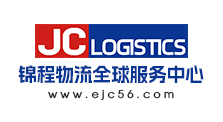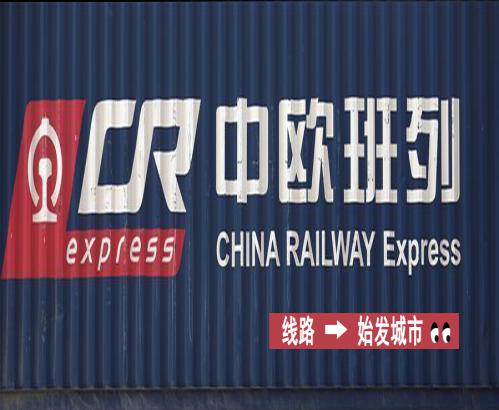Five global supply chain and logistics trends in 2021
2020 has been one of the most difficult and challenging years in modern history. To date, 2.2 million individuals have officially died from COVID-19 and over 100 million have been infected. The changes in how we work, live and play have been fundamental causing some areas to fast forward several years in time – like how we consume, purchase and work – while other areas took a step back, like fighting global poverty.
In this article, I will not be gearing into global macro trends, even though there is a correlation. I’ll share some thoughts about upcoming trends within the logistics industry. Since there are numerous trends, I have selected a few that I find particularly interesting and emerging.
Trend 1: Green Logistics
Sustainability has been with us as a driving trend for some time now. At the same time, it has also turned the corner last year and clearly emerges from “Sustainability Department” to a company-wide and society-wide focus. While becoming greener and contributing to the environment, it is also cost-effective, increases customer loyalty, boosts growth, and is at the same time a strong reason why talent signs up and wants to join the company. According to the Harvard Business Review, the businesses that are focused on sustainability grow almost 6 times faster than those who don’t.
With the increased awareness that transportation is a large contributor to greenhouse gas emissions, green logistics has gained significant traction over the years. Designing value chain towards advanced energy management systems and electric and solar-powered vehicles to lower their overall carbon footprint will emerge in a rapid way.
Supply Chain Executives will also evolve from being “fulfilment” and “Cost of Sales” focused to being in the epicentre of sustainability. I think we will see the rise of the Sustainability Chain Officer. In combination with this, I see greater collaboration between alike parties within the industry to share information and assets jointly, to optimize the environmental impact together.
Another area emerging in Green logistics is the circular supply chain that is starting to replace the linear supply chain, those adopting the circular supply chain approach stand to gain from reduced costs in the long term, reduced waste and reduced impact on the environment. A key driver in the adoption of this approach is stricter regulations when it comes to recycling and waste disposal, as well as a reason one remains relevant for its customers who more and more focuses on their ecosystem footprint.
Trend 2: Supply Chain Resilience
One thing that COVID-19 pandemic in 2020 spurred was Supply Chain Resilience. Questions were raised of how agile and flexible the value chains were, both from a supply standpoint but also from an autonomy and national security standpoint. The trend to have more regionalized supply chains with production closer to market has been talked about for the last 10 years, but COVID-19 put in the next gear here. The original reason for sourcing from- and offshoring to low labor cost markets and then ship to consumer markets made a lot of sense in a pre-highly automated supply chain world and also to a degree in a pre “green supply chain” world. With increasing level of fully automated manufacturing, the cost of labor becomes a lesser part and it’s rather cost of energy, taxes, ease of doing business, fiscal stability and similar areas that become core in decisions.
3D printing is a technology that will further boost the capabilities of resilience. It is also so that customer request on shorter and shorter lead-times drives revised needs on the supply chains. Other areas we have seen coming up is a “made in home country” sentiment as well as locally produced. The development of IoT, Big data, predictive analytics and AI has enabled totally different levels of speed, transformation, and efficiency. Which is very much enabling more resilient supply chains and supply chains that are perceived as more customer adaptive and personalized, as well as operating more cost-efficiently and with less scrap and oversupply.
Trend 3: Shipment of Refrigerated Goods
The growing world population, expected to be 11 billion by end of year 2100, from 1 billion year 1800, improved average income, increased consumption, increased demands on food safety, increased level of “wellbeing” diseases and adding a COVID-19 that will be with us for years to come and a demand picture is starting to shape.
Carriers, Forwarders and OEMs need to get ready to meet the global demand for refrigerated products, including foods, beverages, and pharmaceuticals. Research indicates that refrigerated shipping will experience fast growth in the next couple of years. COVID-19 caused a major shakeup in the drug industry, making it quicker and easier to trial drugs. The overall biopharma demand is growing and most strongly outside of key manufacturing centres in Europe and the US and these products therefore need to be transported via highly regulated and controlled freight methods. The global distribution of COVID-19 vaccine, but also other medicine demands will require logistics planning like never before due to the temperature requirements. Shipping companies will need to expand their fleets of trucks and shipping containers as well as climate-controlled warehouses. To that, they need to apply advanced technology such as IoT applications, Machine learning and Predictive analytics.
Trend 4: Omnichannel Services and contactless deliveries as the new normal
Today’s customers want flexibility in their orders. Those companies that can provide an omnichannel experience will be able to best satisfy their customers. Whether customers are shopping online or in the actual store, they want options; delivery options, in-store or curbside pickup options, or pick up at another location are all becoming a part of doing business.
The omnichannel approach offers a personalized experience for customers as marketing, sales, and logistics combine efforts. Logistics and supply chains are responsible for the consistent fulfilment of orders that come from any of the channels. No-contact delivery is the new normal, offering various drop-off delivery options, borne from customer desires to minimize physical contact. Significant development is in motion to push robotic deliveries into its next phase using robotics and artificial intelligence-based applications. Initially, development has been on B2C side, but we are seeing several the B2B emerging.
Trend 5: Technology and 5G
Technology is the enabler of the transformation. I highlighted this trend in last year’s article I wrote about 2020 trends. Since then, and despite COVID-19, the world is seeing a massive development around 5G, the deployment of 5G and its use cases and currencies are widespread. By the end of this decade, 5G will have changed the business landscape as we know it.
The full potential of IoT (Internet of Things) to track inventory will finally be unleashed under 5G. Cargo can be fitted with inexpensive sensors that use very little power, and track goods from the factory floor, through the shipping process, to the warehouse, all the way to store shelves, creating a trusted record of an item’s journey. One of the most disruptive uses for 5G networks is driverless transportation. 5G is likely to make this possibility a reality, which will have a huge impact on the logistics industry.
Every business relies on data to function, and logistics companies handle even more data than most. Because of the far lower latency, companies will be able to distribute and exchange far larger quantities of data than ever. They can process it closer to the source, rather than dialing out to remote servers. It means companies will have the means to build a lean, distributed cloud network to tie their logistical operations together. The collaborative potential alone for using 5G to keep multiple vendors and partners on the same page, in real-time is a potential game-changer alone.
Overall, we are up for a highly transformative, rapidly moving and very exciting future. It’s imminent for supply chain leaders to foster an environment that attract individuals with an infinite mindset, where learn, re-learn and learn again is a natural.
Employees need to be increasingly savvy with interpreting, analysing, and conceptualising information and collaborate around it. This requires employees with highly agile and cognitive capabilities and who have a mindset of curiosity. Also, it puts significant new demands on the type of leadership and its maturity to leverage and truly release the power of the people and organisations.
- Geodis buys US freight broker Velocity Transport
- Box cargo shifts to bulk vessels to find affordable capacity
- Maersk resumes Yantian calls as nearby ports remain under pressure
- New system launched for first- and last-mile cargo tracking for forwarders
- Egypt agrees to release Ever Given from Suez Canal
- Culina buys Eddie Stobart owner GreenWhiteStar
-
1
马士基航运公告
关于第 23 周 TPX 船舶相关截止时间的通知
-
2
海洋网联船务公告
KCI船期晚开通知
-
3
赫伯罗特公告
12月27日,赫伯罗特官网发布最新公告表示,“穿越苏伊士运河的情况仍然太...
-
4
达飞轮船公告
FAL8航线EVER MEED轮0716001W(0SCF5W1MA)航次开航及相关操作时间调整通知(UPDATE 1)...
-
5
达飞轮船公告
WAX航线MAERSK ENSHI轮422W(0WWI5W1MA)航次开航及相关操作时间调整通知(UP3)...
-
6
达飞航运公告
达飞在公告中表示,针对从巴尔的摩港口出口的货物……
-
7
马士基航运公告
马士基表示:“可以确认集装箱船“DALI”为Grace Ocean所有,由Synergy Group运营。...
-
8
马士基+赫伯罗特!“双子星”联...
2月1日,由马士基公司和德国赫伯罗特股份公司合作运营的“双子星”海运服务网络正式开...
-
9
达飞轮船公告
CV2航线AS PAMELA轮066W(0IGRTW1NC)航次开航及相关操作时间调整通知...
-
10
突发!美国邮政停收中国内地和中...
最新消息,美国邮政服务(USPS)当地时间周二(2月4日)晚间宣布,从2月4日起暂停接收从...

